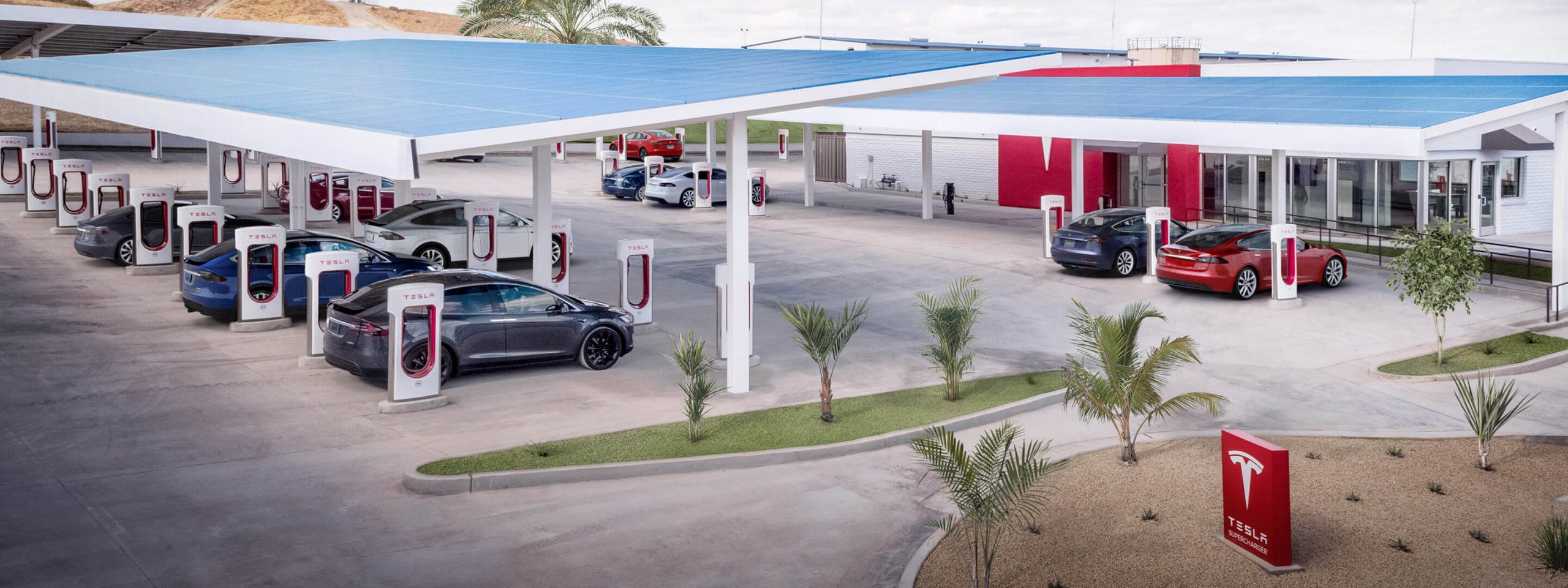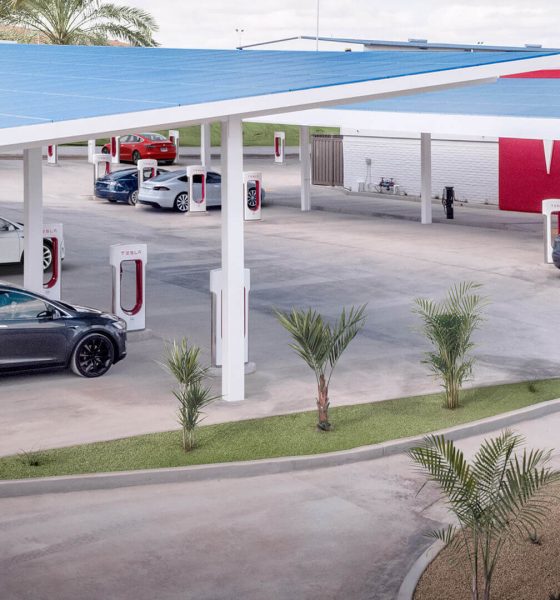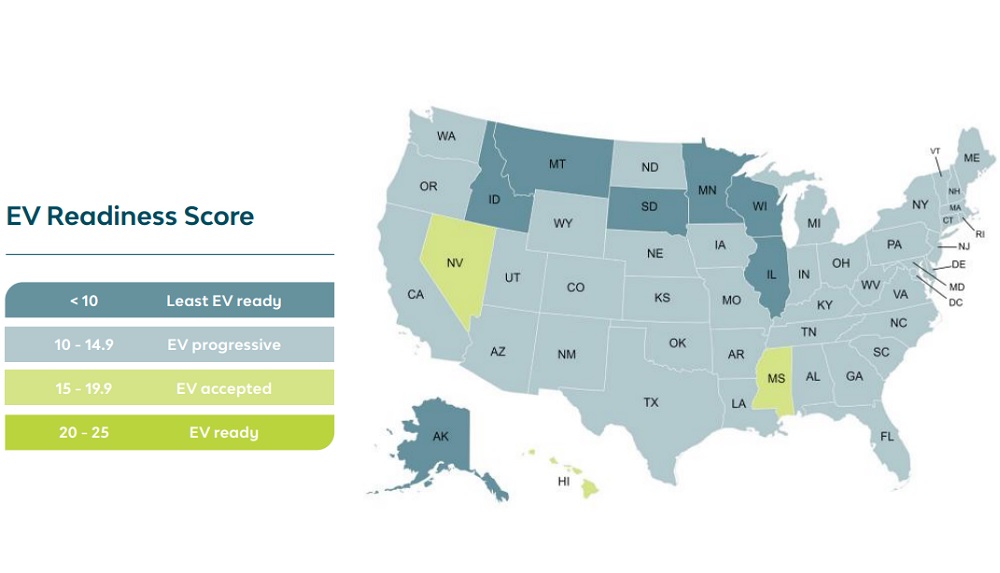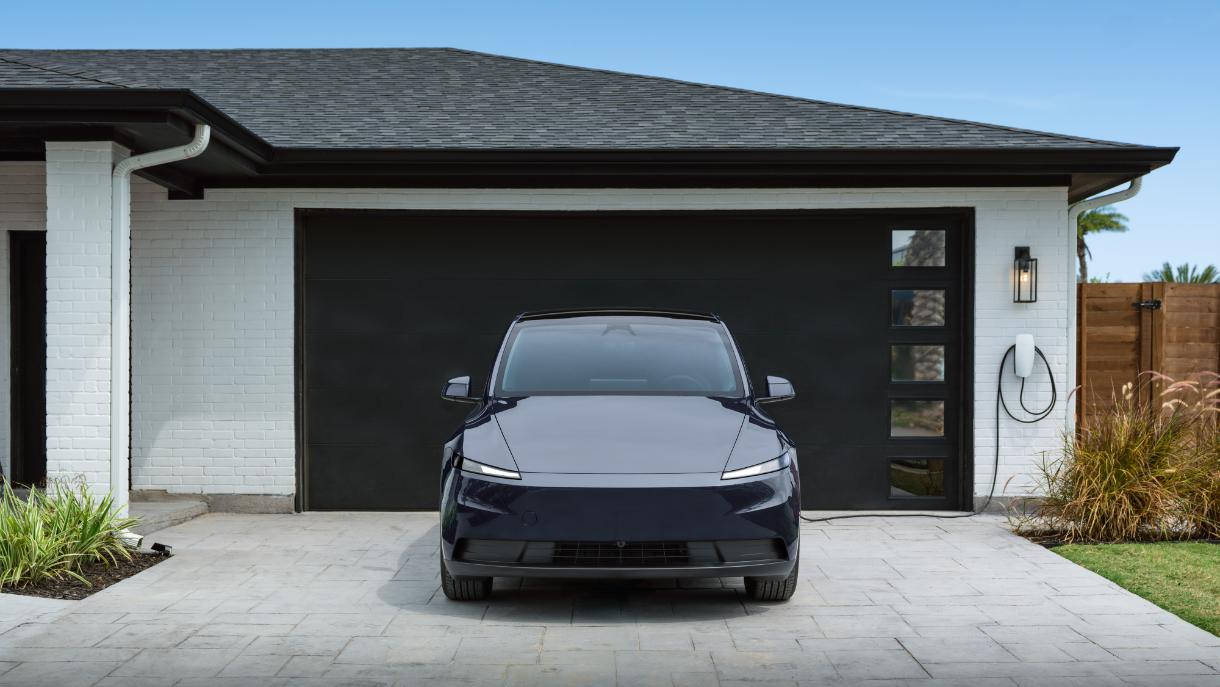

News
EV Readiness Index Study shows which U.S. States are most prepared for an electrified future
Perhaps one of the most crucial parts of the transition to electric vehicles as a nation is each state’s ability to commit to an electrified future. As some areas were quick to adapt to EVs due to their geographic location in relation to the most innovative companies, others are well off the pace and are possibly years away from being even remotely prepared. A new survey that reveals the EV Readiness Index, a 1-5 ranking in several factors that effectively grades a state’s preparedness for an electrified future, shows that many states are on their way, only a few are ready, and several are nowhere close.
LeasePlan USA, a self-proclaimed “Car-as-a-Service” company, released the results of its EV Readiness Index study in the United States. All fifty states, including Washington DC, were assessed.
The Index ranks each state on a weighted scale, scoring between 1 and 5 points based on five factors: favorable state legislation and incentives, EV penetration, Charger-to-Vehicle ratio, public charger availability, and climate suitability. States with scores between 20 and 25 were considered to be “EV Ready,” while between 15 and 19.9 points were labeled “EV Accepted.” Between 10 and 14.9 points would be graded “EV Progressive,” while the worst states, which scored anything less than 10 points, were recognized as “Least EV Ready.”
The study recognized three states as the most prepared: Nevada, Mississippi, and Hawaii “mainly due to top scores in climate suitability, but also reporting better than average scores in charger suitability,” the study said. However, no state scored between 20 and 25 points, constituting it “EV Ready.”

The least ready states were Idaho, Alaska, and Minnesota, which scored only 1 out of a possible 5 points in climate suitability, EV penetration, and Charger-to-Vehicle ratio. Idaho and Alaska also scored poorly in state legislation and incentives that would promote EV ownership.
Surprisingly, California was only considered “EV Progressive,” with its score being 14.5 points. It scored a perfect 5 out of 5 in terms of EV penetration as it has a 2.99 percent market share of electric vehicles in the overall passenger vehicle market. Hawaii at 2.20 percent and Washington at 1.80 percent joined California as the states with the best EV penetration. Mississippi, North Dakota, and West Virginia were the states with the worst EV penetration, scoring 0.09 percent, 0.10 percent, and 0.11 percent, respectively.
Only two states scored above 2 points in the Laws & Incentives portion of the study: California with a perfect 5 and New York with 3. California has a whopping 134 forms of legislation or purchasing incentives favorable to EVs, while New York has 42. “A great example from California is the Plug-In Electric Vehicle (PEV) Rebates for Fleet Vehicles offered by the Sacramento Municipal Utility District (SMUD). SMUD offers rebates to businesses for the purchase of new commercial light-, medium-, and heavy-duty PEVs, ranging from $750 per vehicle for Class 1-2b and passenger vehicles, up to $15,000 per vehicle for Class 8 assets,” the study states.
All Fifty States and Washington D.C. Ranked
Each state will be listed in order by score from high to low, followed by a dash. The next five numbers will coordinate with the scores from 1-5 in the following categories: Law & Incentives, EV Penetration, Charger-to-Vehicle ratio, Charger Availability, and Climate Suitability.
- Nevada – 15.50 – 2, 2, 1, 3, 5
- Mississippi – 15.0 – 1, 1, 3, 3, 5
- Hawaii – 15.0 – 1, 3, 1, 2, 5
- Massachusetts – 14.50 – 2, 2, 2, 4, 3
- California – 14.50 – 5, 3, 1, 1, 5
- North Carolina – 14.25 – 2, 1, 1, 3, 5
- South Carolina – 14.00 – 1, 1, 1, 3, 5
- Alabama – 14.00 – 1, 1, 1, 3, 5
- Georgia 14.00 – 1, 1, 1, 3, 5
- Louisiana – 14.00 – 1, 1, 1, 3, 5
- Arizona – 14.00 – 2, 2, 1, 2, 5
- Missouri – 13.50 – 1, 1, 3, 4, 3
- New York – 13.50 – 3, 1, 2, 4, 3
- Wyoming – 13.00 – 1, 1, 5, 3, 3
- Washington D.C. – 12.75 – 1, 2, 2, 3, 3
- Texas – 12.75 – 2, 1, 1, 2, 5
- West Virginia – 12.50 – 1, 1, 4, 3, 3
- Colorado – 12.50 – 2, 2, 1, 3, 3
- Tennessee – 12.50 – 1, 1, 1, 3, 4
- Florida – 12.50 – 1, 1, 1, 2, 5
- Utah – 12.25 – 1, 2, 1, 3, 3
- Kansas – 12.00 – 1, 1, 3, 3, 3
- Maine – 12.00 – 1, 1, 3, 3, 3
- Rhode Island – 12.00 – 1, 1, 3, 3, 3
- Arkansas – 12.00 – 1, 1, 3, 3, 3
- Iowa – 11.50 – 1, 1, 2, 3, 3
- Oklahoma – 11.50 – 1, 1, 2, 3, 3
- Connecticut – 11.25 – 2, 1, 1, 3, 3
- Maryland – 11.25 – 2, 1, 1, 3, 3
- Virginia – 11.25 – 2, 1, 1, 3, 3
- Michigan – 11.00 – 1, 1, 1, 3 ,3
- Ohio – 11.00 – 1, 1, 1, 3, 3
- Nebraska – 11.00 – 1, 1, 1, 3 ,3
- Indiana – 11.00 – 1, 1, 1, 3, 3
- Pennsylvania – 11.00 – 1, 1, 1, 3, 3
- New Hampshire – 11.00 – 1, 1, 1, 3, 3
- Delaware – 11.00 – 1, 1, 1, 3, 3
- Kentucky – 11.00 – 1, 1, 1, 3, 3
- New Mexico – 11.00 – 1, 1, 1, 3, 3
- New Jersey – 11.00 – 2, 2, 1, 2, 3
- Oregon – 11.00 – 2, 2, 1, 2, 3
- Washington – 11.00 – 2, 2, 1, 2, 3
- Vermont – 10.50 – 2, 2, 3, 3, 1
- North Dakota – 10.00 – 1, 1, 5, 3, 1
- Illinois – 9.50 – 1, 1, 1, 2, 3
- South Dakota – 9.00 – 1, 1, 3, 3, 1
- Montana – 8.50 – 1, 1, 2, 3, 1
- Wisconsin – 8.25 – 2, 1, 1, 3, 1
- Minnesota – 8.25 – 2, 1, 1, 3, 1
- Alaska – 8.00 – 1, 1, 1, 3, 1
- Idaho – 8.00 – 1,1, 1, 3, 1
I’d love to hear from you! If you have any comments, concerns, or questions, please email me at joey@teslarati.com. You can also reach me on Twitter @KlenderJoey, or if you have news tips, you can email us at tips@teslarati.com.

News
SpaceX shades airline for seeking contract with Amazon’s Starlink rival

SpaceX employees, including its CEO Elon Musk, shaded American Airlines on social media this past weekend due to the company’s reported talks with Amazon’s Starlink rival, Leo.
Starlink has been adopted by several airlines, including United Airlines, Qatar Airways, Hawaiian Airlines, WestJet, Air France, airBaltic, and others. It has gained notoriety as an extremely solid, dependable, and reliable option for airline travel, as traditional options frequently cause users to lose connection to the internet.
Many airlines have made the switch, while others continue to mull the options available to them. American Airlines is one of them.
A report from Bloomberg indicates the airline is thinking of going with a Starlink rival owned by Amazon, called Leo. It was previously referred to as Project Kuiper.
American CEO Robert Isom said (via Bloomberg):
“While there’s Starlink, there are other low-Earth-orbit satellite opportunities that we can look at. We’re making sure that American is going to have what our customers need.”
Isom also said American has been in touch with Amazon about installing Leo on its aircraft, but he would not reveal the status of any discussions with the company.
The report caught the attention of Michael Nicolls, the Vice President of Starlink Engineering at SpaceX, who said:
“Only fly on airlines with good connectivity… and only one source of good connectivity at the moment…”
CEO Elon Musk replied to Nicolls by stating that American Airlines risks losing “a lot of customers if their connectivity solution fails.”
American Airlines will lose a lot of customers if their connectivity solution fails
— Elon Musk (@elonmusk) December 14, 2025
There are over 8,000 Starlink satellites in orbit currently, offering internet coverage in over 150 countries and territories globally. SpaceX expands its array of satellites nearly every week with launches from California and Florida, aiming to offer internet access to everyone across the globe.
Currently, the company is focusing on expanding into new markets, such as Africa and Asia.
News
Tesla Model Y Standard stuns in new range test, besting its Premium siblings
Tesla’s newer vehicles have continued to meet or exceed their EPA estimates. This is a drastic change, as every 2018-2023 model year Tesla that Edmunds assessed did not meet its range estimates.

The Tesla Model Y Standard stunned in a new range test performed by automotive media outlet Edmunds, besting all of its Premium siblings that are more expensive and more luxurious in terms of features.
Testing showed the Model Y Standard exceeded its EPA-estimated range rating of 321 miles, as Edmunds said it is the “longest-range Model Y that we’ve ever put on our loop.” In the past, some vehicles have come up short in comparison with EPA ranges; for example, the Model Y’s previous generation vehicle had an EPA-estimated range of 330 miles, but only drove 310.
Additionally, the Launch Series Model Y, the first configuration to be built in the “Juniper” program, landed perfectly on the EPA’s range estimates at 327 miles.
It was also more efficient than Premium offerings, as it utilized just 22.8 kWh to go 100 miles. The Launch Series used 26.8 kWh to travel the same distance.
It is tested using Edmunds’ traditional EV range testing procedure, which follows a strict route of 60 percent city and 40 percent highway driving. The average speed throughout the trip is 40 MPH, and the car is required to stay within 5 MPH of all posted speed limits.
Each car is also put in its most efficient drive setting, and the climate is kept on auto at 72 degrees.
“All of this most accurately represents the real-world driving that owners do day to day,” the publication says.
With this procedure, testing is as consistent as it can get. Of course, there are other factors, like temperature and traffic density. However, one thing is important to note: Tesla’s newer vehicles have continued to meet or exceed their EPA estimates. This is a drastic change, as every 2018-2023 model year Tesla that Edmunds assessed did not meet its range estimates.
Tesla Model Y Standard vs. Tesla Model Y Premium
Tesla’s two Model Y levels both offer a great option for whichever fits your budget. However, when you sit in both cars, you will notice distinct differences between them.
The Premium definitely has a more luxurious feel, while the Standard is stripped of many of the more premium features, like Vegan Leather Interior, acoustic-lined glass, and a better sound system.
You can read our full review of the Model Y Standard below:
Tesla Model Y Standard Full Review: Is it worth the lower price?
News
Xpeng CEO: Tesla FSD 14.2 has developed “near-Level 4” performance
While acknowledging that imperfections remain, the Xpeng CEO said FSD’s current iteration significantly surpasses last year’s capabilities.

Xpeng CEO He Xiaopeng has offered fresh praise for Tesla’s Full Self-Driving (FSD) system after revisiting Silicon Valley more than a year after his first hands-on experience.
Following extended test drives of Tesla vehicles running the latest FSD software, He stated that the system has made major strides, reinforcing his view that Tesla’s approach to autonomy is indeed the proper path towards autonomy.
Tesla FSD closing in on Level 4 driving
During his visit, He test-drove a Tesla equipped with FSD V14.2. He also rode in a Tesla Robotaxi. Over roughly five hours of driving across Silicon Valley and San Francisco, He said both vehicles delivered consistent and reassuring performance, a notable improvement from his experience a year earlier.
According to He, Tesla’s FSD has evolved from a smooth Level 2 advanced driver assistance system into what he described as a “near-Level 4” experience in terms of capabilities. While acknowledging that imperfections remain, the Xpeng CEO said FSD’s current iteration significantly surpasses last year’s capabilities. He also reiterated his belief that Tesla’s strategy of using the same autonomous software and hardware architecture across private vehicles and robotaxis is the right long-term approach, allowing users to bypass intermediate autonomy stages and move closer to Level 4 functionality.
He previously tested Tesla’s FSD V12.3.6 and Waymo vehicles in California in mid-2024, noting at the time that Waymo performed better in dense urban environments like San Francisco, while Tesla excelled in Silicon Valley and on highways.
Xpeng’s ambitious autonomy roadmap and internal challenge
The Silicon Valley visit also served as a benchmark for Xpeng’s own autonomy ambitions. He stated that Xpeng is looking to improve its VLA autonomous driving system to match the performance of Tesla’s FSD V14.2 within China by August 30, 2026. Xpeng is poised to release its VLA 2.0 smart driving software next quarter, though He cautioned that the initial version will not be able to match FSD V14.2’s capabilities, as noted in a CNEV Post report.
He also added a personal twist to the goal, publicly challenging Xpeng’s autonomous driving team. If the performance target is met by the 2026 deadline, the CEO stated that he will approve the creation of a Chinese-style cafeteria for Xpeng’s Silicon Valley team. If not, Liu Xianming, head of Xpeng’s autonomous driving unit, has pledged to run naked across the Golden Gate Bridge, He noted.








